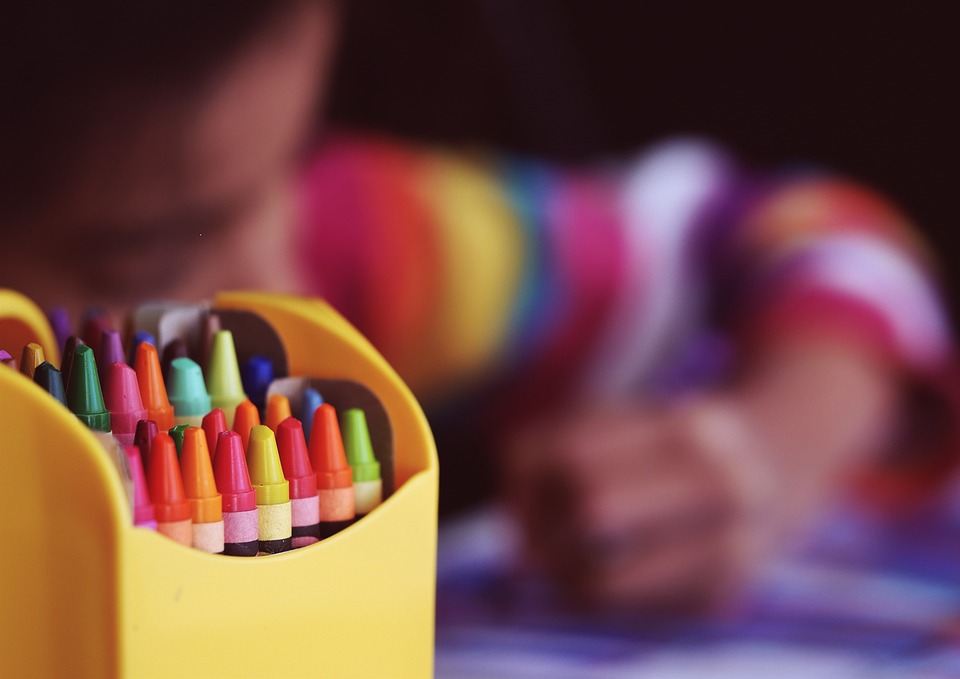7 fun ways to help your kid love Primary 1 maths

What should your child know to prepare herself for Primary 1 maths?
Well, get her to appreciate the numerals that naturally occurs in our daily lives, say educators. For instance, have her weigh out flour in the kitchen with you. Or point out signboards in shops that offer, say, 20 per cent off the original price, suggests Debra Saw, principal of Qifa Primary School.
While mathematics may seem a formidable classroom subject, kids are often surrounded by daily teaching and learning opportunities outside the classroom, points out Debra.
According to the Ministry of Education's (MOE) website, the P1 curriculum is designed to be accessible to the masses, so children who have no prior knowledge in the subject will not be disadvantaged.
The curriculum will begin with basic skills and concepts, such as counting from one to 10. Also, basic understanding of multiplication and division concepts, in terms of grouping and sharing, will also be taught.
WHAT YOUR KID WILL LEARN IN PRIMARY 1 MATHS
Though some children in P1 can count up to 100, it's not necessarily the standard to push for. However, it would be helpful if she can at least count from one to 20 at the start of the year, suggests Patricia Quek, a trainer at Discovery Edu Cove.
Both Patricia and Wendy Zee, a trainer at MPM Math give examples of tasks that your child would be required to work on in her first year:
COUNT OBJECTS IN A GIVEN SET, AS WELL AS READ AND WRITE THE NUMBER IN NUMERALS AND WORDS
For example, an illustration of seven pencils is given and the child may be asked to write the answer as "7" and "seven".
COMPARE THE NUMBER OF OBJECTS IN TWO OR MORE SETS
For example, the teacher may show the last two pictures: one group with five strawberries and another with 10 strawberries. The teacher will ask which has more, and how many more.
WORK WITH NUMBER PATTERN
Children should be able to complete basic number patterns like 1, 2, 3, _, _, 6.
ADD AND SUBTRACT
To transit successfully into P1 from K2, your child should be familiar with these concepts, says Patricia. They will have to:
WORK WITH SINGLE AND DOUBLE DIGIT
Patricia offers the following examples: 2+3 = 5 and 12+8 = 20.
DRAW NUMBER BONDS UP TO 10
While P1 pupils will learn how to build addition bonds up to 9+9, preschoolers would do well to know how to draw number bonds that add up to 10 by the end of K2, advises Patricia, who cites examples such as 1 and 9, 2 and 8, 7 and 3 that make up 10. "Some preschools may not cover number bonds," she notes.
MULTIPLY AND DIVIDE
The MOE maths syllabus states that P1 pupils will learn multiplication as repeated addition within 40; and division of a quantity no greater than 20, into equal sets.
While Wendy says that some understanding of multiplication and division would also be helpful but not essential, Patricia suggests that children about to start P1 be at least familiar with multiplication and division of 2 and 3, more in terms of understanding the concepts than actually memorising the times table.
Parents can illustrate the division concept through daily examples such as this sum: "We have 4 pieces of chicken nuggets to share. How many pieces would the 2 of us have if we were to share them equally?"
Meanwhile, "multiplication to 40 means they will show 5 groups of 8 or 4 groups of 10, for instance," explains Patricia. "Overall items would not exceed 40."
An example: A car has 4 wheels. Draw 10 cars. How many wheels does 10 cars have? The child is then expected to write the following mathematical statement: 10×4 = 40.
Some preschools may use visual aids such as ping-pong balls or ice cream sticks to explain the concepts of multiplication and division to their pupils, and some do not. But most children are already trained to understand these basic concepts in K2.
"Once they understand the application, it's not so much how big the numbers are anymore," explains Patricia.
KNOW THE BASIC SHAPES
As an entry point, it would be useful for your child to be able to identify the four shapes in 2-D: square, circle, rectangle and triangle. P1 pupils will be introduced later to making or completing patterns according to one or two of the following attributes: shape, size or colour.
COMPARE SIZES, HEIGHT, LENGTH AND WEIGHT
A P1 child will be working with measurement and comparison of length and mass. They will also learn to differentiate the orientation of objects, whether they are facing right or left, or pointing up or down.
"The new syllabus hopes to allow the child to be able to connect to daily life," explains Patricia.
Ultimately, Debra assures parents not to be overly concerned about their kid being left behind if she's unable to cope.
"If they are found not to be ready (to work on the curriculum), they will be placed in the school's Learning Support Programme, where they will be helped to catch up with the rest," she explains.
7 WAYS TO HELP YOUR KID LEARN MATHS IN A FUN WAY AT HOME
Patricia agrees with Debra that preschoolers learn best when teaching is done with real life examples or scenarios.
1. TAKE YOUR KID SUPERMARKET SHOPPING

"When you're shopping with your child, count the number of items in the trolley," says Patricia. "Let her add the numbers when you need someone to add the bill while checking it at the restaurant.
2. READ FUN BOOKS ABOUT MATHS
"Read books on maths to spur her interest in numbers. One book I recommend would be A Very Improbable Story: A Math Adventure by Edward Einhorn and Adam Gustavson. It's more important to get her to understand what it means rather than how it's done."
Patricia Quek of Discovery Edu Cove offers more tips on teaching maths concepts:
3. USE PUZZLES TO INTRODUCE NUMBER PATTERNS

"Introduce puzzles like sudoku for kids and IQ questions - those that challenge their spatial, mathematical, visualisation, analytical, classification, logic and pattern recognition abilities."
4. DRAW COMICS TO UNDERSTAND PROBLEM SUMS

"Allow them to draw comics (when working out) different problem sums. It gives the questions meaning and adds fun to the exercise."
5. CREATE SONGS TO REMEMBER MULTIPLICATION

"Preschool teachers often create their own songs or rhymes that their pupils sing to. You can make up some number songs and sing them, too."
6. USE PROPS TO TEACH DIVISION

"This might be a bit tricky, as they might not even understand the concept. Using props would be best. For example, using chocolates, you could ask your child: 'If I have 4 pieces of chocolates, how many pieces should each of us have if I were to share them equally between the 2 of us?"'
7. PRACTISE WITH A WEIGHING SCALE TO TEACH MASS

"They should be able to understand the meanings of 'longer than' and 'shorter than'. Many P1 pupils have problems with mass and reading the weighing scale. Buy a weighing scale and practise using it."
Time: "P1 children will need to tell and write time to the hour and half hour, excluding the 24-hour clock. So have your kid wear a non-digital watch. My mother taught me (how to read) the clock by constantly asking me the time. We were taught to say '15 minutes past 3' or 'a quarter to 4'."
Money: "Your child will need to tell the amount of money in cents up to $1, in dollars up to $100. Allow him to carry loose change and get him to buy the newspapers or sweets. Point out price tags while shopping, and explain the importance of money."
This article was first published in Young Parents.